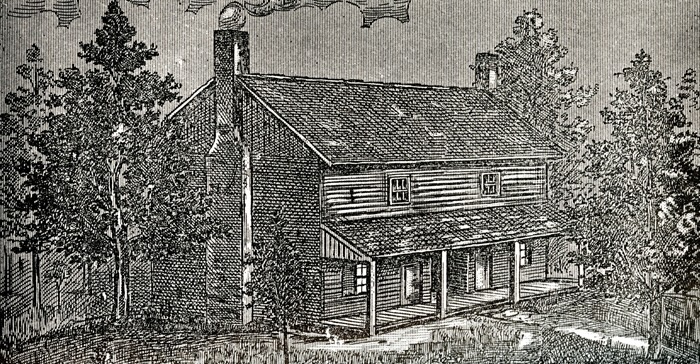’┐ĮEmbodied Memories, Ancestral Histories,’┐Į at the Sarasota Art Museum, is Juana Vald’┐Įs’┐Įs first museum solo show.
Time and tide wait for none, they say. But art can direct those unrelenting forces to its own expressive purpose. That is the insistent implication of ’┐ĮEmbodied Memories, Ancestral Histories,’┐Į Juana Vald’┐Įs’┐Įs retrospective at the Sarasota Art Museum. Currents of all kinds pass through the exhibition, beginning with a large photomural that dominates the space. It shows the artist crouching down below Havana’┐Įs Malec’┐Įn’┐Įthe city’┐Įs main boardwalk’┐Įlaunching little paper boats into the water. Vald’┐Įs made the boats from pages torn from Cirilo Villaverde’┐Įs classic 1882 novel Cecilia Vald’┐Įs, a story of love and revenge set against the racist colonial caste system; then she tossed them into the surf, one by one over the course of six hours, sending each in turn to its own fate. (Though described in the wall label as a ’┐Įperformance piece,’┐Į the work seems more like a private act.)
This was back in 2000, on the occasion of Vald’┐Įs’┐Įs first return to Cuba since she had emigrated to the United States at the age of 7. Given that personal context, the gesture had an obvious element of self-portraiture’┐Įa connotation extended by the mirroring of the artist’┐Įs last name and that of the novel’┐Įs protagonist. It was also a clear allusion to the mass exodus of Cubans under the regime of Fidel Castro, and to the millions of other refugees who daily risk their lives on the seas.
The idea of flow, across spaces both literal and cultural, is the subject of Vald’┐Įs’┐Įs art. Elsewhere in the exhibition, transit is materialized through found objects, artifacts treated as the flotsam of demographic movement. The room-size installation Terrestrial Bodies (2020) presents hundreds of porcelains, metalwork, glassware, African tourist goods, and other bric-a-brac, all arranged according to geographic categories that align with the artist’┐Įs maternal ancestry (verified by a 23andMe DNA test that revealed heritage from Africa, Asia, and the Americas). This is portraiture by quite another means, with souvenirs tracing the process of globalized identity formation. Here and there, large cyanotypes punctuate the display: they show the undersides of the collected objects, emphasizing their status as evidence; they also introduce a deep blue, the color of the oceans across which these commodities have moved.
 Juana Vald’┐Įs: Redbone Color China Rags, 2017.
Juana Vald’┐Įs: Redbone Color China Rags, 2017.
If this work is somewhat didactic’┐Įmore museological than sculptural’┐Įthe show also has moments of terse understatement and fragile beauty. Redbone Color China Rags (2017) at first appears to be a series of cleaning cloths hung on the wall, as if from a clothesline. On closer inspection, they prove to be sensitively crafted ceramic skeins, tinted across a spectrum of skin tones from pale pink to deep brown. The intersection of racial coloration and abstraction is familiar from Byron Kim’┐Įs ongoing project Synecdoche (1991’┐Įpresent), but the tacit reference to domestic labor grounds the work in the lived experience of immigrant communities, particularly that of women, who so often bear the greatest burden of maintaining their families.
Another work in bone china, Hanging By (2017), shows Vald’┐Įs at her most poetic. It comprises nine thin white ceramic sheets, looking very much like paper, on which words are printed in black. The first bears a verse both elusive and desperate: ’┐ĮIt’┐Įs about hanging by a nail by a thread by the skin of your teeth.’┐Į Successively rearranged in the subsequent panels, the expression cycles through a series of confusing realignments’┐Įstarting with ’┐ĮIt’┐Įs about hanging the skin by a thread a nail your teeth’┐Į’┐Įand gradually diminishing into the single, baleful phrase, ’┐ĮIt’┐Įs about your skin.’┐Į Aesthetically elegant and linguistically compressed, the work captures the dreadful calculus of racism in all its enormity, the reduction of meaning to a single arbitrary signifier.
Vald’┐Įs is not willing to accept that reckoning, of course, and in the exhibition’┐Įs most complex and satisfying work, she makes a sensational mockery of it. Sweet Honesty-Tender Pink (1997) occupies a whole room, the walls blocked out in standard decorator’┐Įs paints with ethnically charged names like ’┐ĮAngel Peach,’┐Į ’┐ĮCaf’┐Į Noir,’┐Į and ’┐ĮWar Dance.’┐Į Against this backdrop, Vald’┐Įs prints fragments from 18th-century etchings of exoticized odalisques, the bare-breasted women taking on different coloration depending on where they happen to fall on the tinted walls. Finally, on the far wall is a large video projection of Vald’┐Įs taking a shower, perpetually sudsing herself. Another precedent springs to mind: Janine Antoni’┐Įs Lick and Lather (1993), in which the artist cast herself in busts of chocolate and soap, licking the former all over and taking the latter into the bath with her. While it occupies the same lineage of feminist art, Vald’┐Įs’┐Įs work is more capacious, taking in the long ugly history of stereotype, her own desire to rid herself of it, and the impossibility of fully doing so. Most important, as is always the case with Vald’┐Įs’┐Įs best work, she orchestrates all this into a rich emotional tapestry, shot through with threads of bitterness and humor. Amazingly, this is Vald’┐Įs’┐Įs first solo show at a museum, and Sarasota is a great place for it: the recently renovated building has beautiful galleries, and, of course, Florida is the epicenter of the Cuban-American community. (The artist herself lives in Amherst, where she is associate professor at the University of Massachusetts.) All the same, this is a show that deserves to be seen more widely, and Vald’┐Įs deserves far greater recognition. What she has to say is relevant to anyone whose life has been touched by migration’┐Įand who among us can say otherwise? Global displacement is often considered a problem, something to manage or police. Through her work, we can see more clearly: motion, in time and tide, is the only real universal.












